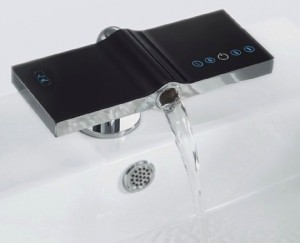Now we are surrounding whole day with modern electronics device. From the morning to night in the bed we use electronics device. Even in our bed we sleep with our mobile phone.
Microsoft is researching how gadgets like the company’s Xbox game machine, surface computers and accelerometers in mobile phones could be used to improve health care.
Some of the applications from Microsoft Research, the software giant’s lab branch, plug into existing Microsoft products like HealthVault, a Web service for patients to track their own health records.
One of those projects, an application called MyLife for Windows Mobile phones, could help a user log health metrics like blood pressure and weight, and monitor daily activities including exercise, walking and eating. Ongoing work on the application could allow it to help personal logs using built-in devices on a phone like its camera, its accelerometer and its microphone.
The “dream” is that a user could photograph each meal with their phone to have the application return data such as caloric content, food group and allergy information for each item on a plate, said Eric Chang, director of technology strategy at Microsoft Research Asia, in an interview. To make that easier, a phone could also get the information by scanning a tag attached to a meal, he said.
Accelerometers, which are increasingly built into phones to sense how they tilt, can detect how people sway while they walk, which lets MyLife count the steps a user takes each day, Chang said. The app does not yet use the microphones found in all mobile phones but could do so to gain additional information about a user’s activities and surroundings, he said.
One challenge for such an app is keeping the demands on a user low. Taking a picture of each meal could be cumbersome, but where possible the app could minimize active user input by using information that the phone already has, such as a user’s day calendar or data from linked-up wireless sensors, Chang said. Data from the app can be uploaded to Microsoft’s HealthVault for the user to store and track.
MyLife plays into a larger goal of putting more personal medical data into the hands of patients, a flip from how most of that data today is stored in hospitals, Chang said.
“I think that’s really going to allow us to have personalized medicine,” he said.
Microsoft is one of many companies working on mobile health tools, said Christine Chang, an analyst at Ovum. The data will be extremely useful for physicians and researchers, but obstacles include cost, since smartphones and their data plans cost more, and making sure the data is correct, she said.
HealthVault could have a positive effect on health care too, but it faces a rival in Google Health and the two companies may have to work together to make the market work, Ovum’s Chang said.
Other Microsoft researchers are looking at how the company’s Xbox 360 could be used in hospital rooms. Xbox units, which are cheaper than other hospital equipment but still have powerful hardware, are currently favored in a project on how to feed information from electronic medical records onto in-room display screens for patients, said Desney Tan, a senior researcher at Microsoft Research.
Researchers are also looking at how to automate the data transfer from complex records and choose or filter displayed information according to conditions such as whether the doctor or family members are in the room, which could be detected by sensors, Tan said. Xbox units could be used for those purposes, to present other health information and to let patients play games or access certain Internet services, including through body gestures enabled by Microsoft’s upcoming Project Natal control system, he said.
Tan was speaking during a Microsoft forum on health-care technology in Beijing, where other Microsoft research projects discussed included the use of computers built into tabletops to instruct patients on how to care for themselves away from the hospital.
The computers could be used to pull content like X-ray images from personal records, or other pictures from the Internet, and to save them for the patient to view later, said Michael Gillam, head of the Microsoft Medical Media Lab.
Source: PC World




Pingback: Mobile Media Metrics data change face website marketing - INTERNET - Free Daily Tips
Pingback: iPhone CAT Scanner